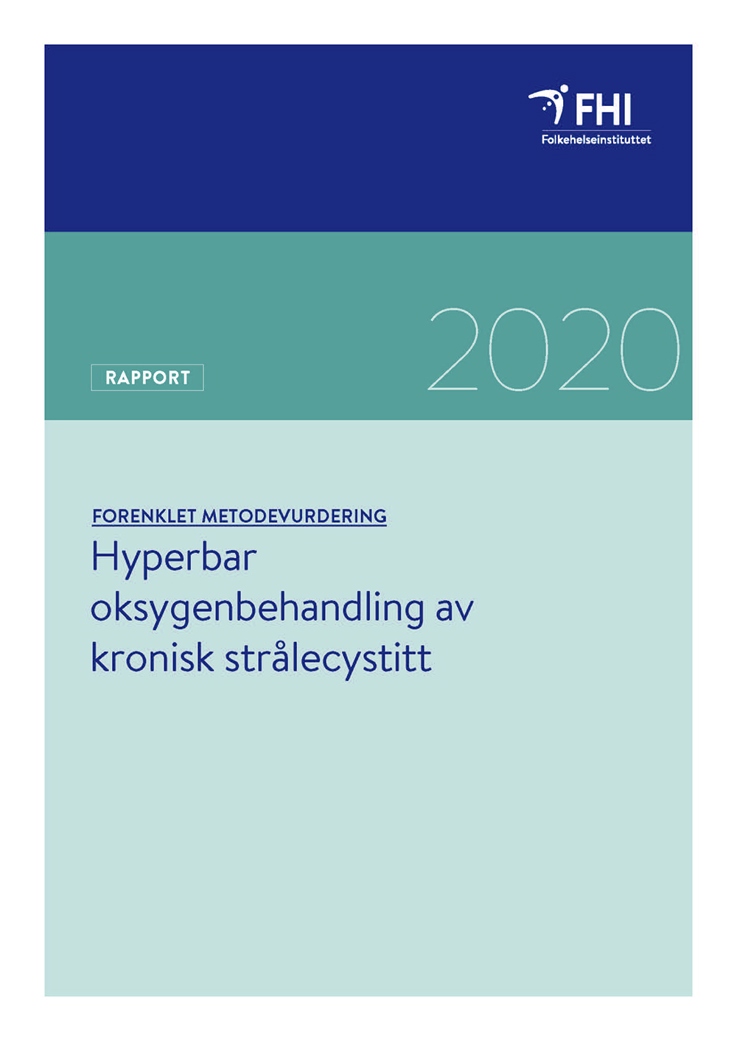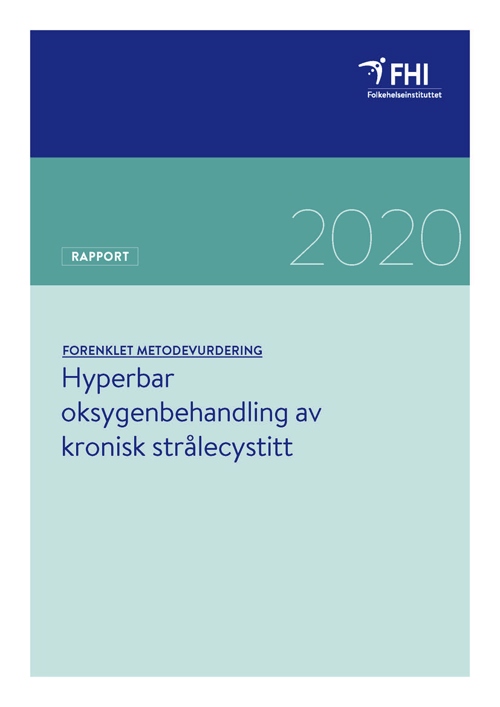Hyperbaric oxygen therapy for radiation-induced cystitis
Health technology assessment
|Published
The evidence base for effects of hyperbaric oxy-gen treatment consists of two, small randomised controlled trials.
Key message
Hyperbaric oxygen treatment is a possible treatment option for radiation-induced cystitis following cancer treatment in the pelvic area. Patients receiving hyperbaric oxygen treatment breathe pure oxygen in a high-pressure chamber. The treatment session lasts for approximately one to two, and is provided five to seven days per week, 30 to 40 treatments in total.
The evidence base for effects of hyperbaric oxygen treatment consists of two, small randomised controlled trials.
Hyperbaric oxygen treatment compared to standard treatment (not specified):
- Probably slightly improves quality of life
- Probably improves urinary symptoms
- May not make any difference in pain as measured by SF-36
It is uncertain whether there is any difference in effects between hyperbaric oxygen treatment and hyaluronic acid in patients with haemorrhagic cystitis.
A simplified economic assessment shows:
- Total cost per patient is NOK 116 010
- Five-year budget impact is NOK 16 010 133
To conduct a health economic analysis that can address the priority criteria for severity and
resource use, better information is needed about disease progression, current standard treatment and quality-of-life expressed as utility weights.

